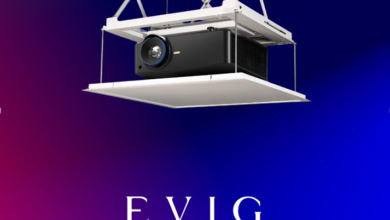
Mutf_In: Kota_Emer_Equi_6og8kj
Mutf_In: Kota_Emer_Equi_6og8kj represents a significant shift in design philosophy. This movement intertwines cultural, technological, and environmental elements to create sustainable solutions. Its emphasis on adaptive interfaces and eco-friendly materials marks a departure from traditional practices. As it continues to shape modern design, one must consider the implications of this evolution. What challenges and opportunities lie ahead for a discipline increasingly defined by its commitment to innovation and sustainability?
Origins of Mutf_In: Kota_Emer_Equi_6og8kj
The origins of Mutf_In: Kota_Emer_Equi_6og8kj can be traced back to a confluence of cultural, technological, and environmental factors that shaped its development.
Historical context reveals significant cultural influences from diverse societies, fostering a unique amalgamation of practices and ideologies.
This synthesis of ideas and innovations provided a fertile ground for Mutf_In’s evolution, ultimately reflecting the aspirations of a free-thinking, dynamic community.
Key Features and Innovations
While examining Mutf_In: Kota_Emer_Equi_6og8kj, one can identify several key features and innovations that distinguish it within its cultural context.
The emphasis on user experience intertwines seamlessly with its design aesthetics, creating an engaging interaction for users. Notable advancements include adaptive interfaces and sustainable materials, which not only enhance functionality but also resonate with contemporary values, promoting a sense of freedom and individuality.
Impact on Modern Design Practices
The impact of Mutf_In on modern design practices is multifaceted, encompassing sustainability, technology integration, and minimalism.
As designers increasingly prioritize eco-friendly materials and processes, sustainability has become a central tenet of contemporary design.
Furthermore, the integration of advanced technologies facilitates streamlined functionality, promoting a minimalist aesthetic that enhances user experience.
Sustainability in Design
Sustainability in design has emerged as a pivotal consideration in modern design practices, fundamentally reshaping the approach toward product development and architectural innovation.
The integration of eco-friendly materials and circular design principles promotes a holistic lifecycle perspective, encouraging designers to minimize waste and maximize resource efficiency.
This shift not only enhances environmental responsibility but also fosters creativity and innovation in the design process.
Technology Integration Trends
An increasing number of designers are recognizing the transformative impact of technology integration on modern design practices.
Virtual and augmented reality enhance user experience, while AI advancements streamline design automation.
Collaborative tools facilitate teamwork, and data visualization enriches decision-making.
Furthermore, digital fabrication and interactive design create immersive environments, allowing for innovative solutions that empower designers to push boundaries and explore new creative possibilities.
Minimalism and Functionality
In contemporary design practices, minimalism and functionality emerge as dominant philosophies that shape aesthetic and practical outcomes.
Minimalist aesthetics prioritize simplicity and clarity, fostering environments that promote mental clarity. This approach emphasizes the creation of functional spaces that serve specific purposes without excess.
Consequently, designers increasingly seek to balance beauty with utility, enhancing user experiences while adhering to principles of restraint and efficiency.
Integration of Technology in Everyday Life
The integration of technology into everyday life is increasingly evident through the proliferation of smart home devices, mobile applications, and wearable technology.
These innovations not only enhance convenience and efficiency but also significantly influence consumer behavior and lifestyle choices.
Analyzing these trends reveals the profound impact of technology on daily routines and interactions.
Smart Home Devices
As technology continues to evolve, smart home devices have emerged as significant contributors to the integration of technology into everyday life.
These innovations, including smart lighting, voice assistants, and home automation systems, enhance energy management and security.
With IoT connectivity, users benefit from remote monitoring and intuitive user interfaces, although concerns about data privacy persist, necessitating careful consideration in adoption.
Mobile Applications Impact
Smart home devices exemplify a broader trend in technology integration into daily routines, with mobile applications playing a pivotal role in this landscape.
These applications enhance user experience by providing seamless control and customization, leading to increased user engagement. As individuals seek greater autonomy, the intuitive design of mobile apps empowers users, enabling them to navigate their environments with unprecedented ease and flexibility.
Wearable Technology Trends
While wearable technology continues to evolve, its integration into everyday life is reshaping how individuals interact with their health, fitness, and overall well-being.
The emergence of wearable fashion facilitates seamless health tracking, enabling users to monitor vital metrics discreetly.
As these devices become more sophisticated, their role in promoting a proactive approach to personal health is increasingly significant, fostering a culture of wellness.
Case Studies and Real-World Applications
Case studies serve as vital instruments in examining the practical applications of theoretical concepts in various fields.
By analyzing user experience within design thinking frameworks, these studies illuminate how innovative approaches enhance product development.
For instance, companies employing iterative testing and feedback loops have achieved significant improvements, showcasing the effectiveness of user-centered design in creating solutions that resonate with target audiences and improve overall satisfaction.
Future Potential and Trends
How will emerging technologies shape the future landscape of design thinking?
Future innovations promise to redefine methodologies through enhanced collaboration, data analytics, and immersive experiences.
Design forecasting will increasingly integrate artificial intelligence and machine learning, enabling designers to anticipate user needs and preferences.
This evolution fosters a creative environment, empowering individuals to explore uncharted territories while ensuring solutions remain relevant and impactful.
Conclusion
In conclusion, Mutf_In: Kota_Emer_Equi_6og8kj represents a pivotal shift in design philosophy, akin to a seed planted in fertile ground, ready to blossom into a sustainable future. By harmonizing cultural values, innovative technology, and ecological mindfulness, this movement not only challenges traditional aesthetics but also redefines functionality. Its potential to influence modern design practices is profound, promising a landscape where creativity flourishes and individual expression thrives amidst the demands of an ever-evolving world.




